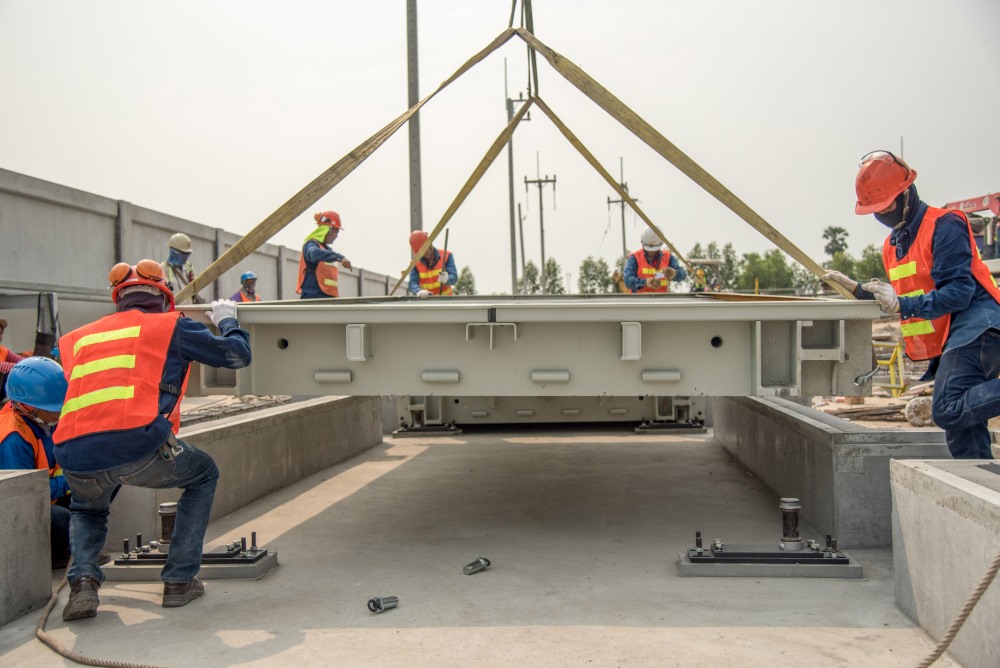 February 19, 2025
February 19, 2025
Load cell hysteresis is the small difference in measurement when a load cell doesn’t return to exactly the same reading after a set weight is added and then removed.
This means the measurement can vary slightly depending on whether the weight is increasing or decreasing. Even though the difference is small, it can matter in precise applications.
Understanding hysteresis, its causes, and how to minimize its effects can make a big impact on your weighing system’s reliability and efficiency.
What Is Load Cell Hysteresis?
Load cell hysteresis is when the load cell’s output is slightly different depending on whether the applied force is increasing or decreasing.
If you apply a certain amount of weight and then remove it, the load cell may not return to the exact same reading as before. This is because of small mechanical and material properties within the load cell, such as internal stresses, minor deformations or friction in the sensing elements.
Hysteresis is important in applications that require very high precision. Even a small variation in measurement can affect industries like aerospace, pharmaceuticals or laboratory testing where accuracy is critical. For example, if a scale in a production line gives different readings when loading vs unloading a product, it can lead to weight inconsistencies.
How to Calculate Load Cell Hysteresis
Hysteresis in a load cell is the difference in its readings when applying and removing the same weight. A lower hysteresis means more accurate measurements.
How to Measure Hysteresis
- Apply a Load: Slowly add weight and note the reading.
- Remove the Load: Slowly take the weight off and record the reading at the same load level.
- Compare the Readings: The difference between the two readings shows the hysteresis.
- Evaluate Accuracy: Smaller differences mean better accuracy.
Why It Matters
- Good load cells have very little hysteresis (less than 0.05% of their full capacity).
- High hysteresis can signal mechanical issues, material stress, or improper setup.
Keeping hysteresis low helps ensure reliable and consistent weight measurements.
What is Hysteresis in Weighing Balance?
Hysteresis in the weighing scale is the small difference in weight readings depending on whether the load is increasing or decreasing.
This means that if you add weight to the scale and then remove it, the displayed weight may not return to exactly zero or may be different when the same weight is readded.
Why Does Hysteresis Happen in a Weighing Balance?
Hysteresis occurs due to small mechanical and material deformations in the load cell inside the balance. The reasons include:
- Elasticity of the Load Cell: The load cell may not return to its exact original shape after being loaded and unloaded.
- Internal Friction: Tiny friction forces within the load cell components can cause minor delays in returning to the correct value.
- Material Fatigue: Over time, repeated loading and unloading can slightly change the balance’s behavior.
- Electrical or Temperature Effects: Changes in electrical signals and temperature variations can also contribute to hysteresis.
How Hysteresis Affects Weighing Systems
Hysteresis in a weighing system can cause inaccurate readings, affecting accuracy and reliability.
This means the weight displayed may vary slightly depending on whether the load is increasing or decreasing.
Here’s how it affects different parts of a weighing system:
1. Accuracy
- The weight reading may not be the same when measuring an object twice – once while increasing the load and once while decreasing it.
- This is especially problematic in high accuracy industries like pharmaceuticals, laboratories and industrial batching.
2. Repeatability
- If a load cell has high hysteresis, the system may give different readings for the same object at different times, causing errors in quality control.
- This can cause issues in automated systems where weight consistency is critical.
3. Calibration Drift
- Over time, repeated loading and unloading can cause minor permanent shifts in weight readings, requiring more frequent calibration.
- If hysteresis is not accounted for, calibration may not fully correct the issue.
4. Impact on Process Efficiency
- In industries where weight data is used for inventory control or billing (e.g., truck scales, packaging systems), hysteresis can cause customers to be overcharged or undercharged.
- Inconsistent readings slow down operations, as users may need to re-weigh or recalibrate more often.
How to Troubleshoot Hysteresis in Weighing Systems
If you suspect hysteresis is affecting your weighing system, follow these load cell troubleshooting steps:
1. Perform a Hysteresis Test
- Add a known weight gradually, record the reading, then remove the weight and re-add it.
- If the weight readings are different when loading vs unloading, hysteresis is present.
2. Check for Mechanical Impairments
- Ensure proper load cell installation: Misalignment or uneven surfaces can cause errors.
- Check for overload damage: If the load cell was previously overloaded, it may have residual deformation causing hysteresis.
- Look for loose or worn components: Friction in the mechanical structure can cause lag in load recovery.
3. Check for Electrical Damage
- Check for loose or damaged wiring that may cause signal fluctuations.
- Ensure cables are properly shielded from electrical noise, which can introduce variations in readings.
4. Environmental Factors
- Temperature changes affect the material in the load cell causing hysteresis.
- High humidity or corrosion can change the load cell over time.
5. Load Cell Calibration
- Do a full calibration cycle to adjust for minor changes in the load cell behavior.
- Use certified calibration weights to check the system.
6. Upgrade to Low-Hysteresis Load Cell
- If hysteresis is still an issue, replace the load cell with a higher quality, low-hysteresis model designed for precision applications.
Trust Massload for Expert Load Cell Solutions
Hysteresis in load cells and weighing systems is a subtle but important effect affecting weight measurements’ accuracy, repeatability, and efficiency across a range of applications.
Knowing how hysteresis works helps keep industrial scales, lab balances, and automated weighing systems accurate and reliable.
If you know how to measure and fix hysteresis, you can improve your weighing process, cut down on errors, and keep your weight data accurate over time.
Looking for more information on related topics? Check out our articles:
- The role of sensibility on load cell performance;
- Troubleshooting common weighing errors;
- Best practices for maintaining industrial scales.
Knowing these will help you optimize your weighing system and get more accurate measurements.


